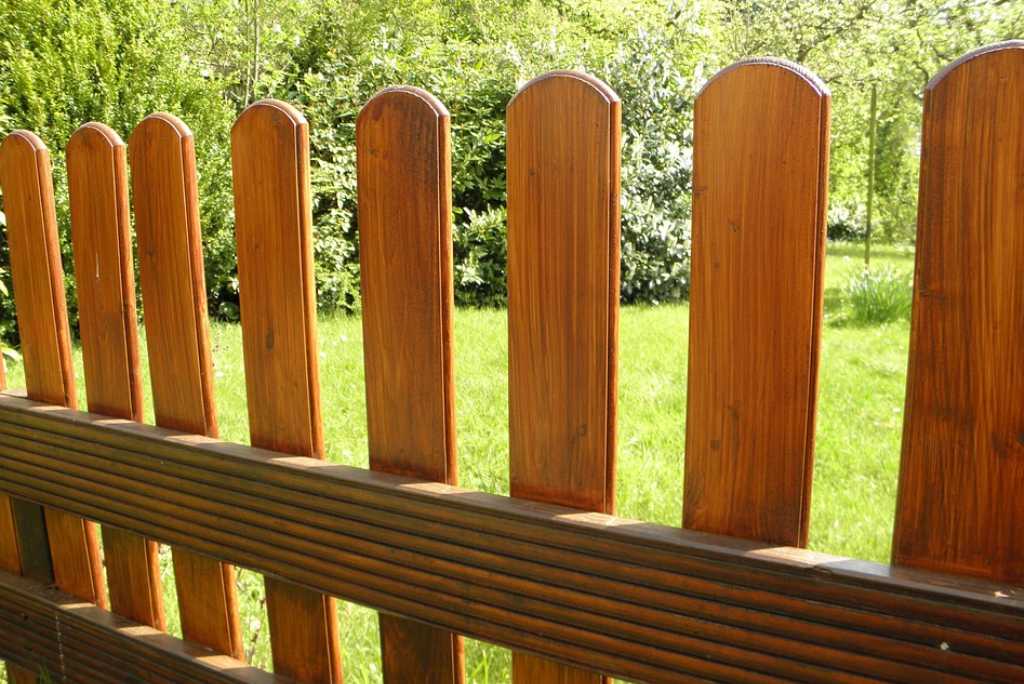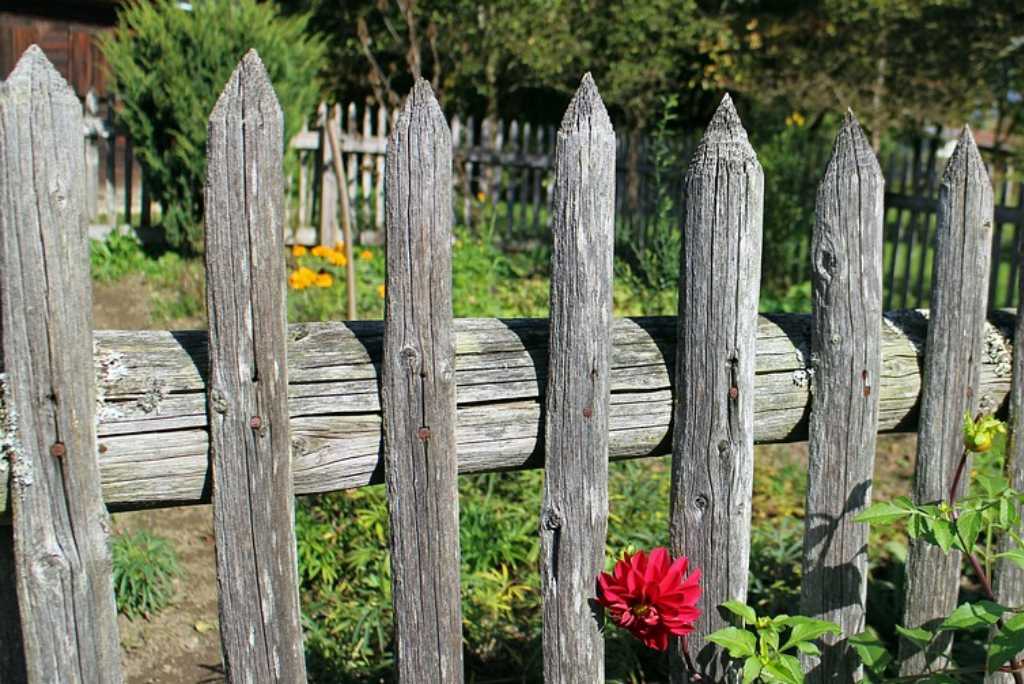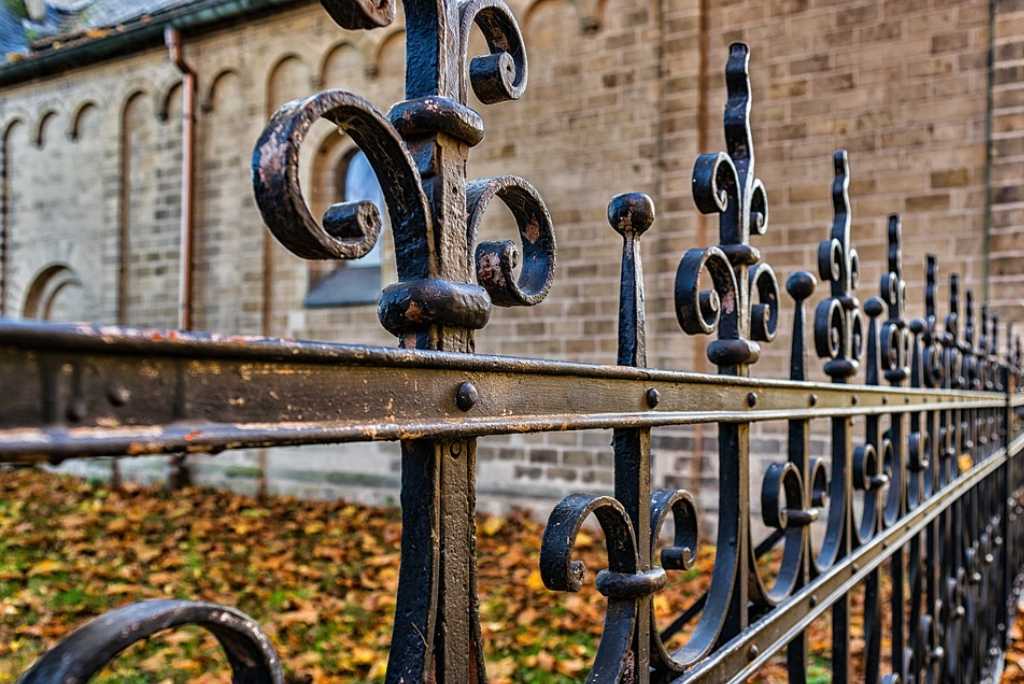- Free Estimates

A well-built fence can be a crucial component of any property, providing privacy and security and enhancing the overall aesthetics. Building a fence can be fulfilling whether you’re a homeowner looking to create a backyard oasis, a business owner seeking to secure your premises, or someone interested in taking on a DIY project.
In this comprehensive blog, our expert fence contractor in Newtown, CT, will provide tips and tricks on building a fence successfully, covering all aspects from planning to maintenance. So, let’s dive in and learn how to create a durable, beautiful fence that will stand the test of time.
Before you hammer nails or dig post holes, planning your fence project thoroughly is essential. Proper planning will ensure that your fence serves its intended purpose and complies with local regulations. Here are some key considerations when planning your fence project.
The first step in planning your fence project is determining your needs. For example, are you building a fence for privacy and security, or to enhance the aesthetics of your property? Understanding the purpose of your fence will help you determine the appropriate style, height, and location for your fence.
Before embarking on your fence project, it’s crucial to research local regulations and obtain any necessary permits. Local regulations may include setbacks from property lines, height restrictions, and other building codes that you must comply with. Familiarize yourself with these regulations to avoid any legal issues down the road.
Setting a budget for your fence project is essential to avoid overspending. Consider factors such as materials, tools, labor costs (if applicable), and additional features such as gates or decorative elements. A realistic budget will help you make informed decisions and stay within your financial limits.
The design of your fence can greatly impact its functionality and appearance. First, consider the style, height, and materials that suit your needs and aesthetic preferences. Then, research different fence styles and materials to determine which fits your vision and budget best.
Once you have a clear plan, it’s time to gather the necessary materials and tools for your fence project. The materials and tools you choose will depend on the type of fence you are building and your budget. Here are some factors to consider when gathering materials and tools.
When learning how to build a fence, it’s crucial to consider the various fencing materials available, each with its own pros and cons. Common options include wood, vinyl, metal, composite, and more.
To decide on the best material for your fence, it’s essential to research and understand the options available. Then, consider your budget, desired aesthetic, maintenance requirements, and privacy needs to choose the right material that fits your needs and preferences.
When choosing fencing materials, weighing the pros and cons is crucial. Consider factors such as durability, maintenance requirements, cost, and aesthetics. For example, wood may require staining or painting but can offer a classic and natural look. On the other hand, vinyl may require minimal maintenance but can lack the warmth of wood. Understanding the pros and cons of each material will help you make an informed decision based on your needs and preferences.
Once you have chosen your materials, you must calculate the quantities needed. Next, measure the perimeter of the fence line and account for any gate openings. This will help you determine the fencing material needed, such as panels, posts, and rails. It’s always a good idea to purchase extra material to account for any mistakes or unexpected issues during construction.
The right tools for the job ensures a smooth and efficient fence-building process. Some common tools you may need include a measuring tape, level, circular saw or handsaw, post-hole digger or an auger, drill, hammer, nails or screws, and a wheelbarrow for mixing concrete if needed. It’s important to have all the necessary tools ready before you start your fence project to avoid delays or complications.

Before you start digging post holes or installing panels, preparing the site properly is essential. Here are some key steps to take when preparing the site for your fence.
Use stakes and a string line to mark the perimeter of your fence line. This will help you ensure that your fence is straight and aligned properly. Also, measure and mark the locations of any gate openings or other features you plan to include in your fence.
Remove any vegetation or debris from the fence line to create a clean and clear area for construction. This includes trimming or removing bushes, shrubs, or trees that may interfere with the fence. Also, remove any rocks, roots, or other obstacles obstructing the installation process.
As you embark on your journey to learn how to build a fence, it’s crucial to prioritize safety, including checking for underground utility lines before digging post holes. Contact your local utility company to come and mark the location of any buried lines, such as gas, water, or electric, to avoid potential damage during construction. This step is essential to prevent accidents and ensure the safety of yourself and others involved in the fence installation. Safety should always be a top priority in any construction project, and taking the time to locate and mark utility lines is a crucial part of that process.
The foundation of any sturdy fence is solidly installed fence posts. Here are some important steps to follow when installing fence posts.
Using a post hole digger or an auger, dig holes for your fence posts according to your predetermined spacing and depth. The depth of the post holes will depend on the height of your fence and local regulations. As a general rule of thumb, the post holes should be at least one-third of the total length of the post for maximum stability.
Place the posts into the holes, ensuring they are plumb and level. Use a level to ensure the posts are perfectly vertical and adjust as needed. It’s important to ensure that the posts are level and straight, as this will determine your fence’s overall stability and appearance.
If you’re building a fence that requires extra stability, such as a tall or heavy fence, you may set the posts with concrete. Mix the concrete according to the manufacturer’s instructions and pour it into the post holes around the posts. Use a level to ensure the posts remain plumb and level while the concrete sets. Allow the concrete to cure fully before proceeding to the next steps.
Once your fence posts are securely set, attaching the rails and panels is time. Here are some important steps to follow when attaching rails and panels.
Measure the distance between the fence posts and cut the rails to the appropriate length. Then, use a circular saw or handsaw to make clean and straight cuts. Ensuring that the rails are level and evenly spaced is crucial, as they will support the panels.
Using nails or screws, attach the rails to the posts. Ensure the rails are level and secure, as they will hold the panels in place. Use a level to ensure that the rails are straight and aligned properly, and make necessary adjustments.

With the rails securely attached, it’s time to install the fence panels. Here are some key steps to follow when installing fence panels.
Installing fence panels is critical when learning how to build a fence. Once you have prepared the rails, it’s time to place the first panel against the first set of rails. Ensuring the panel is level and aligned properly before securing it with nails or screws is essential. Then, using a level, check for any adjustments needed to ensure the panel is straight and aligned with the rest of the fence. Repeat this process for each panel, leaving enough room for any gate openings or other features you plan to include and securing them tightly to the rails for a sturdy and durable fence. Properly installing fence panels ensures your fence’s overall stability and aesthetic appeal.
Depending on the layout of your fence and the location of obstacles, such as trees or uneven ground, you may need to trim the fence panels to fit. Use a circular saw or handsaw to make clean and accurate cuts, ensuring the panels fit snugly and securely within the fence line.
Once all the panels are installed, it’s time to add the finishing touches to your fence. Here are some important steps to consider for a professionally finished fence.
Adding Post Caps
Post caps are decorative and serve as a protective barrier for the top of the fence posts, preventing water damage and extending the fence’s lifespan. Choose post caps that complement the style of your fence and secure them in place with nails or screws.
If you want to enhance the appearance and durability of your newly built fence, painting or staining it can be a great option. Choosing a high-quality paint or stain that is specifically formulated for outdoor use and can withstand the elements is crucial. Research different options and select a product that best fits your needs. Follow the manufacturer’s instructions for application and drying times to ensure optimal results. It’s important to apply the paint or stain evenly for a professional finish that will protect your fence from the elements and elevate its visual appeal. Properly painting or staining your fence is an important step in the process of learning how to build a fence, as it adds a layer of protection and aesthetics to your investment.
If your fence includes a gate, it’s important to install it properly to ensure proper functionality and security. Follow the manufacturer’s instructions for gate installation, and make sure it is level, aligned, and securely attached to the fence posts. Install any necessary hardware, such as hinges and latches, according to the manufacturer’s instructions.
Once your fence is complete, cleaning up the construction site properly is important. Remove debris, tools, or excess materials from the site, and dispose of them appropriately. Inspect the fence for any loose nails, screws, or other hazards, and make any necessary repairs to ensure the safety and integrity of the fence.
Inspect your fence regularly for signs of pests, such as termites, ants, or other insects that can cause damage to the wood. If you notice any signs of infestation, immediately address the issue and prevent further damage to your fence. Use pest-resistant wood or apply appropriate treatments to protect your fence from pests.
Protect your fence from the harsh weather effects by applying a weatherproofing treatment. This can help prevent rot, decay, and damage from UV rays. First, choose a weatherproofing treatment suitable for your fence material, whether wood, vinyl, metal or another type. Then, follow the manufacturer’s instructions for application and reapplication, and make sure to properly prepare the surface before applying the treatment.

An expert fence contractor in Newtown, CT, has extensive knowledge and experience in building fences of various types and materials. They understand the local building codes, regulations, and permits required for fence construction in Newtown and can ensure that your fence is built to code and compliant with local regulations.
Professional fence contractor in Newtown, CT, takes pride in their workmanship and strives to deliver a high-quality fence that is structurally sound, visually appealing, and built to last. They have the skills, tools, and techniques to build a sturdy, level, and properly aligned fence, ensuring a professional and polished finish.
Building a fence alone can be time-consuming and costly, especially if you lack the necessary tools, materials, and expertise. Hiring a reputable fence contractor in Newtown, CT, can save you time and money by efficiently planning and executing the project, minimizing material waste, and avoiding costly mistakes or repairs down the road.
A fence contractor in Newtown, CT, can help you design a fence that complements the style and aesthetics of your property, meets your specific needs and preferences, and enhances the value of your home. In addition, they can offer expert advice on the best materials, styles, and features for your fence, ensuring that it meets your unique requirements.
A fence contractor in Newtown, CT, has access to professional-grade tools, equipment, and resources that are not readily available to DIYers. This enables them to efficiently and effectively construct a fence that meets industry standards and is built to last. They also have access to various fencing materials and options, allowing you to choose from various styles, colors, and materials that best suit your needs.
Building a fence may require permits and compliance with local regulations, which can be complex and time-consuming to navigate independently. A fence contractor in Newtown, CT, is familiar with the local building codes, regulations, and permits required for fence construction in Newtown and can handle the necessary paperwork and approvals on your behalf. This ensures that your fence is built legally and avoids any potential fines or legal issues.
A fence contractor in Newtown, CT, is licensed, bonded, and insured, providing protection for you and the contractor. Insurance covers any damages or injuries during construction, while a warranty may be offered on the workmanship and materials used. This provides you with peace of mind and protects your investment in case of any unforeseen issues.
A fence contractor in Newtown, CT, can also provide ongoing maintenance and repair services for your fence. They can advise properly caring for your fence, including regular cleaning, staining, and repairs, to ensure its longevity and performance. They can also quickly and efficiently address any issues with your fence, saving you time and effort in troubleshooting and repairs.
A fence requires careful planning, proper materials, and skilled craftsmanship to ensure a durable and beautiful result. From choosing the right type of fence for your needs to understanding the importance of proper installation techniques, this blog has covered essential tips and tricks for a successful fence-building project.
However, if you’re not confident in your DIY skills or simply want to save time and effort, we highly recommend hiring a professional from the Newtown Fence Contractor. With their expertise and experience, they can ensure a high-quality fence that meets your specifications and enhances the aesthetics and functionality of your property. So, don’t hesitate to seek professional help for your next fence-building project and enjoy the benefits of a well-built fence for years to come.